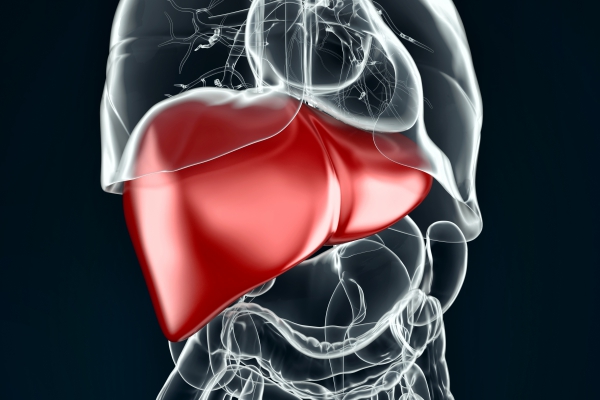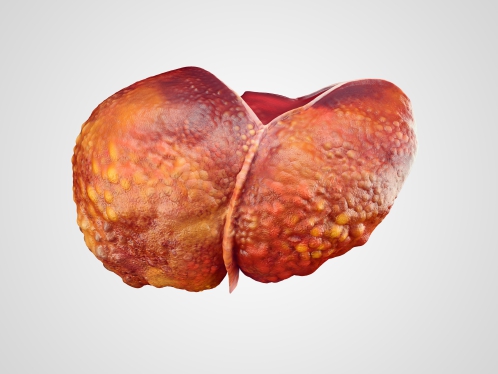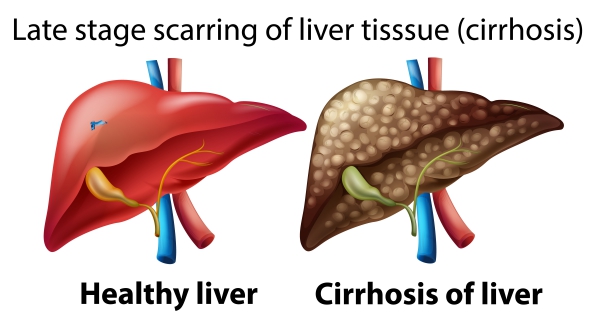What is a liver abscess?
A liver abscess is a collection of pus in the liver. Pus is a thick yellowish or greenish opaque liquid produced in infected tissues which consist of dead white blood cells and bacteria with serum and tissue debris. The liver is an organ located beneath your right ribs. The liver is responsible for the production and excretion of bile which is a dark green fluid responsible for the digestion of fats. In addition, it excretes bilirubin, hormones, drugs and cholesterol. Furthermore, it metabolises fats, proteins and minerals. It also produces clotting factors and removes toxins from your blood.
In the United States, liver abscess affects 2.3 people per 100,000 population. It is also more common in men than in women. The most common type of liver abscess is pyogenic liver abscess.
What are the causes of a liver abscess?
The 2 most common types of liver abscess are pyogenic and amoebic liver abscess. The condition may be caused by infections in the gastrointestinal system, abdomen or blood. In addition, it may also be caused by trauma to the liver or surgical procedures such as endoscopy of the bile ducts.
The infectious causes of liver abscess include:
- Infection in the bloodstream.
- Bacterial infections in the abdomen which are associated with diverticulitis (it is the infection or inflammation of pouches that may form in the intestines), perforated bowel or appendicitis.
- Bacterial infections of the bile ducts.
- Amoebic abscess: This type of liver abscess occurs due to Entamoeba histolytica infection which spreads through water or from person to person.

What are the risk factors of a liver abscess?
There are several factors or diseases which may increase your risk of developing pyogenic liver abscess and these include:
- Recent abdominal surgery.
- Diabetes mellitus.
- Crohn’s disease.
- Current gastrointestinal or abdominal infection.
- Recent endoscopy of the bile ducts.
There are some factors or conditions which may increase your risk of developing amoebic liver abscess and these include:
- Advanced age.
- Poor nutritional status.
- Travelling to areas which amoebic infections are common.
- Alcoholism.
- A weakened immune system due to conditions such as HIV/AIDS, due to prolonged intake of corticosteroids or due to cancer treatments.
What are the signs and symptoms of a liver abscess?
A liver abscess is not life-threatening by itself. It becomes life-threatening when the abscess breaks and the infection spreads. The signs and symptoms of liver abscess vary among people but most commonly include:
- Pain in the upper right portion of the abdomen.
- Pale stools.
- Dark urine.
- Cough.
- Diarrhoea.
- Fever
- Chills.
- Joint pain.
- Loss of appetite.
- Lethargy
- Malaise.
- Nausea.
- Pain when breathing in (pleuritic chest pain).
- Unexplained loos of weight.
- Excessive sweating.
- Jaundice (yellowing of the skin and whites of the eye).

If the liver abscess becomes life-threatening, you may experience the following signs and symptoms:
- High fever.
- Altered mental status such as confusion, delirium, delusions or hallucinations.
- Lethargy.
- An increased heart rate (tachycardia).
- Shortness of breath.
- Severe abdominal pain.
- Vomiting.

Making a diagnosis
To make a diagnosis, your doctor will first take a detailed history from you to know more about your symptoms. After the history taking, your doctor will perform a thorough physical examination to look for signs of a liver abscess. To confirm the diagnosis, your doctor will order some tests and these include:
- Complete blood count (CBC): A CBC is done to assess for anaemia or an increased white blood cell count.
- Liver function test (LFT): An LFT is done to assess the functionality of the liver. The albumin (a protein produced exclusively by the liver) level is usually low and the level of alkaline phosphatase is elevated.
- Enzyme immunoassay: This test is done to detect Entamoeba histolytica in people who have recently travelled to places where this organism is prevalent.
- Computed tomography (CT) scan: A CT scan with contrast of the liver is done to assess the size and characteristics of the liver abscess. It is the imaging of choice for the detection of liver abscesses.
- Ultrasonography: This imaging technique uses sound waves to produce images of the liver. In addition, this imaging technique can be used in pregnant women.
- Radionuclide scanning: This test uses gallium and technetium to evaluate liver diseases. However, this imaging test is not used very often as the other imaging techniques offer more advantages.
- Chest x-ray: A chest x-ray is done to assess whether the lungs are functioning properly.
- Percutaneous aspiration and drainage: This involves your doctor inserting a needle into your liver to access the liver abscess so that the liquid inside is collected or drained. This is usually done under CT scan or ultrasonography guidance. This collected fluid is then sent to the laboratory to identify the organism causing the liver abscess.

What are the treatments of a liver abscess?
The treatment of a liver abscess mainly includes medications and surgical care. Antibiotics are usually not used alone but in conjunction with percutaneous drainage. The choice of antibiotics is determined by the nature of the infecting organisms and the severity of the infection. Examples include gentamycin, clindamycin, combination piperacillin-tazobactam and metronidazole.

In complicated cases, open surgery or laparoscopic surgery may be done to remove the abscess. The laparoscopic approach involves your doctor using a long tube, containing a camera at its end to have direct visualisation of the contents of the abdomen. Various tools can be inserted via small surgically made holes in order to remove the abscess. This technique offers a quicker recovery rate and less hospital days.
What are the complications of a liver abscess?
If a liver abscess is left untreated or not treated properly, the following complications may ensue:
- Pus accumulation in the chest (empyema).
- Liver failure.
- Inflammation of the heart valves and heart lining (endocarditis).
- Accumulation of fluids around the lungs (pleural effusion).
- Spreading of the infection into the blood which can be deadly (sepsis).
- Spreading of the infection to the contents of the abdomen resulting in inflammation (peritonitis).
- Death.
Expectations (prognosis)
Untreated liver abscess remains uniformly fatal. However, with prompt administration of antibiotics and surgical care, the mortality rate drops to 5-30%. The prognosis decreases if there is presence of multiple abscesses, multi-organ failure, complications and a delay in diagnosis. Seeking medical advice early is key to prevent complications and improve the prognosis.


Source:
J. Alastair, I. and Simon, M., 2016. Davidson's Essentials of Medicine. 2nd ed. London: ELSEVIER.
Parveen, K. and Michael, C., 2017. Kumar & Clarks Clinical Medicine. 9th ed. The Netherlands: ELSEVIER.
Peralta, R., 2020. Liver abscess.
Davis, J., 2020. Pyogenic liver abscess.









